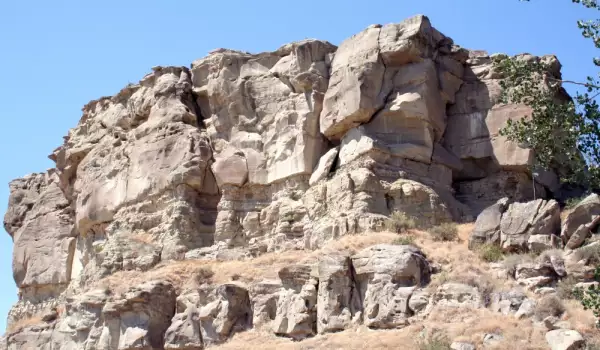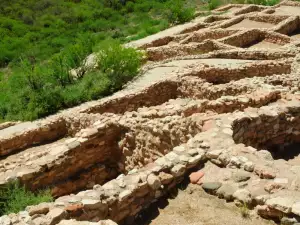Pompeys Pillar National Monument

Pompeys Pillar national monument is located near Yellowstone River near Billings, Montana. The column is actually a rock formation, a sandstone hill, which basically covers about two acres and stands a hundred and fifty feet tall.
It is so remarkable that for centuries it served as a reference. Pompey’s Pillar has been recognized as a national monument in 2001. The whole area of the monument stretches fifty-one acres, so this monument is one of the smallest in the country.
The Pompeys Pillar was formed around sixty-five million years ago. The column has different petroglyphs - stone inscriptions, which are left from the local Indians. Local Indians called this column "where the mountain lion lies". According to some experts, this is due to the fact that part of the column resembles a lion's head. Others say the reason lies in the presence of lions in the region.
The Column is signed by William Clark, who was one of the leaders of the Lewis and Clark Expedition. The inscription left by Clark is the only evidence found to be followed by the expedition.
Clark has written the name and date - twenty-fifth July 1806. He later describes how he climbed a sandstone column and saw the most extensive view in every direction. Clark named the rock formation after the grand son of a member of the expedition, called Jean Baptiste Charbonneau, Clark affectionately called him Pumps (Pompey).
He named the rock Pompey’s Tower and in 1814, the rock formation received its present name. It was invented by Nicholas Biddle, the first editor of the writings of Lewis and Clark.
Each year, Pompeys Pillar attracts over fifty thousand visitors. According to archaeologists, the area was inhabited by people eleven thousand years ago. Hundreds of names and initials are carved on the rock, and among them are the names of pioneers who first set foot in this area.
In 1863 the first observation of the signature of Captain Clark was made by James Stuart.
In 1882, the Northern Pacific Railroad Company covered with a special grille the signature of Captain Clarke, to protect it from vandalism. In 1954, it was replaced by a box made of glass and bronze, donated by the previous owners of the land, the family Foote.















